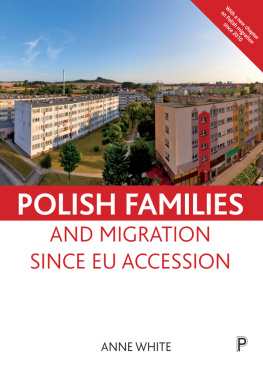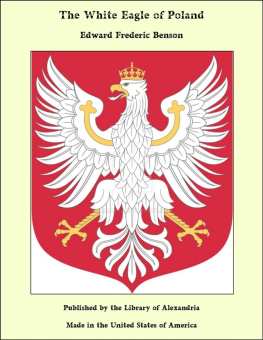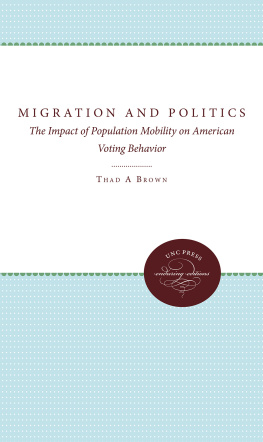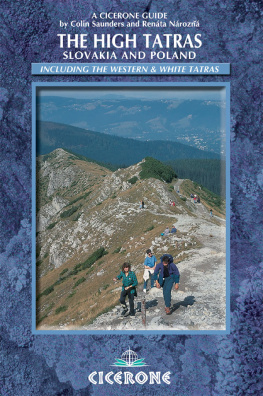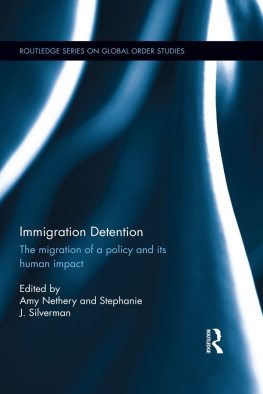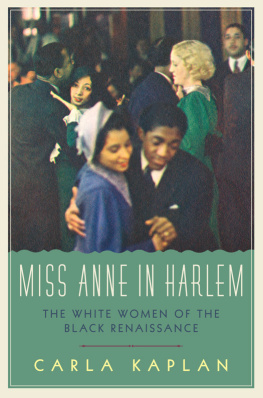The Impact of Migration on Poland
EU Mobility and Social Change
Anne White, Izabela Grabowska, Pawe Kaczmarczyk and Krystyna Slany
First published in 2018 by
UCL Press
University College London
Gower Street
London WC1E 6BT
Available to download free: www.ucl.ac.uk/ucl-press
Text Authors, 2018
Images Authors, 2018
The authors have asserted their rights under the Copyright, Designs and Patents Act 1988 to be identified as authors of this work.
A CIP catalogue record for this book is available from The British Library.
This book is published under a Creative Commons 4.0 International license (CC BY 4.0). This license allows you to share, copy, distribute and transmit the work; to adapt the work and to make commercial use of the work providing attribution is made to the authors (but not in any way that suggests that they endorse you or your use of the work). Attribution should include the following information:
White et al. 2018. The Impact of Migration on Poland: EU Mobility and Social Change . London: UCL Press. https://doi.org/10.14324/111.9781787350687
Further details about Creative Commons licenses are available at http://creativecommons.org/licenses/
ISBN: 978-1-78735-070-0 (Hbk.)
ISBN: 978-1-78735-071-7 (Pbk.)
ISBN: 978-1-78735-068-7 (PDF)
ISBN: 978-1-78735-067-0 (epub)
ISBN: 978-1-78735-066-3 (mobi)
ISBN: 978-1-78735-069-4 (html)
DOI: https://doi.org/10.14324/111.9781787350687
Acknowledgements
The authors would like to express their deep gratitude to the interviewees in Poland, Norway and the United Kingdom who participated in the projects on which this book is based, as well as to everyone who supported the research with practical assistance and advice. Special thanks go to our co-researchers: Micha Garapich, Ewa Jawiska and Agnieszka Radziwinowiczwna (Cultural Diffusion and Social Remittances); Ewelina Ciaputa, Beata Kowalska, Ewa Krzaklewska, Anna Ratecka, Beata Tobiasz-Adamczyk, Marta Warat and Barbara Woniak (Gender Equality and Quality of Life); and Paula Pustuka, Ewa Krzaklewska, Magdalena lusarczyk, Justyna Struzik and Stella Strzemecka (Transfam). The projects were funded by the National Science Centre (Poland), the Polish-Norwegian Research Programme, the British Academy, the Grabowski Fund and the Polish Research Centre of the Jagiellonian University in London. Finally, we thank our families and friends for their support, patience and inspiration.
Contents
Anne White
Anne White, Izabela Grabowska, Pawe Kaczmarczyk and Krystyna Slany
Anne White and Izabela Grabowska
Izabela Grabowska
Pawe Kaczmarczyk
Krystyna Slany
Anne White
Anne White
Anne White
Anne White
Anne White
List of figures
List of tables
How are countries affected by migration?
An inside-out approach to change in sending and receiving countries
ANNE WHITE
In December 2016, Polish television broadcast an advertisement for Allegro, an online shopping site. The advertisement features Robert, a pensioner, purchasing English for Beginners and practising basic words and sentences on the tram and in the bath. Robert then travels to the United Kingdom for Christmas and greets a small mixed-race girl who comes to the door, with the words Hello, Im your grandpa. The video was watched by millions around the world and was the most popular Youtube film of the year in Poland, where a journalist for a leading newspaper claimed that it would be hard to find a Pole who hadnt seen it (Wtor 2017). The film depicted a poignantly familiar situation in a society where almost everyone has family and friends abroad. It was somehow also puzzling, given widespread stereotypes that older people are passive victims of migration and, moreover, do not learn foreign languages.
This book is, as far as we know, the first with the title The Impact of Migration on Country X, and is the most ambitious attempt to date to understand how migration influences social change in a specific sending country. It is not a historical study of migrations cumulative effect on Poland, but, as the reference to EU mobility in the subtitle suggests, an exploration of how Poland today is changing. We consider some overall economic trends, but are particularly interested in how and why Polish society is evolving and how this is, to some extent, because migration affects Poles in their everyday lives. Although we do not try to answer the question of the extent to which social change is caused by migration, migration rarely seems to be the main factor. However, once one begins to investigate, it seems there are many social trends which are reinforced or in other cases held back as a result of migration. For example, we present figures showing that more and more retired Poles are in adult education, and that active English-language knowledge has been increasing overall in the Polish population and even in older age groups. One reason is that as we know from our own and other researchers interviews and participant observation grandparents are indeed learning foreign languages to communicate with family members abroad.
Our book is unusual, as a work of migration scholarship, for its emphasis not on migrants but on stayers people, like Robert, who live in sending countries but who also inhabit transnational social spaces, with multiple reference points thanks to their communications with people abroad and visits to foreign countries. Moreover, Polish society has been filling up with a particularly significant type of stayer: return migrants. According to survey data, 12 per cent of Poles resident in Poland have worked abroad in the last ten years, including 27 per cent of 2534 year olds (Cybulska 2016, 1). Social change also occurs thanks to the addition of these returnees, changing the composition of society in Poland. For example, as discussed in , the number of Poles in Poland who know openly gay people or Muslims (neither often encountered in Poland) has considerably increased in recent years.
The book identifies a number of important trends in Poland, taking into account imperfections in the data, complexities with regard to which subgroups of society are changing, and the presence of counter-trends. In each case we explore why these trends might be occurring, and consider how migration fits into this picture. The book also probes into deeper types of change: not just changing practices, but also the norms, beliefs and even values that can change as a result of those changing practices. For example, an important trend in Poland, as elsewhere in Central and Eastern Europe (CEE), is towards more meaningful rights for women and minorities than existed under the communist regime. Gender equality is one of these, although it has received notable setbacks in Poland recently. Nonetheless, an accumulation of practices linked to migration do promote the underlying trend towards more equal gender roles. One example is rising numbers of women drivers in very recent years. In 2007, 30 per cent of women had a driving licence. In 2015, the figure was 48 per cent (Panek, Czapiski and Kotowska 2007, 42; 2015, 34). This trend towards motor-parity (Bk 2012) has many causes, but in small towns where many men are working abroad, the increase is especially noticeable (Kurczewski and Fuszara 2012, 923).




